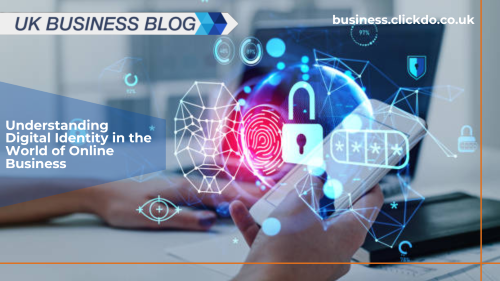Table of Contents
A digital identity is a collection of electronic data that uniquely represents an individual or entity online.
This identity can include personal information, credentials, and other attributes that authenticate and authorize interactions in the digital realm.
The Basics of Digital Identity

At its core, a digital identity is a representation of an individual or entity in the digital space. This identity is created through a combination of personal data and credentials, such as usernames, passwords, biometric data, and other unique identifiers. These elements are used to authenticate and verify the identity of users when they access online services.
The creation of digital identities typically involves collecting personal information during the registration process for online services. This information is then used to create a unique profile that can be authenticated through various means, such as passwords, biometric scans, or two-factor authentication.
Once established, digital identities enable users to interact with online services securely and efficiently.
Digital identities are not static; they evolve as more data is added over time. As individuals interact with different online services, their digital footprint grows, adding more layers to their digital identity. This continuous accumulation of data makes digital identities more robust and multifaceted, enhancing their utility and reliability in the digital economy.
Components of Digital Identity
Digital identities are composed of several key components:
- Personal Information: This includes basic details such as name, address, date of birth, and contact information. Personal information is fundamental to establishing a digital identity and is often required for creating accounts on various online platforms.
- Credentials: These are the means by which an individual proves their identity online. Common credentials include usernames, passwords, and PINs. More advanced forms of credentials include biometric data like fingerprints or facial recognition, and security tokens.
- Attributes: Attributes are additional pieces of information that further define a digital identity. These can include preferences, purchase history, browsing habits, and other data that online services collect to personalize user experiences.
Managing and securing these components is critical to maintaining the integrity and trustworthiness of digital identities.
Effective management involves regularly updating credentials, monitoring for unauthorized access, and ensuring that personal information is kept accurate and up-to-date.
Security measures such as encryption, multi-factor authentication, and regular security audits help protect digital identities from breaches and fraud.
Importance of Digital Identity in Online Business
Customer Authentication and Trust

Digital identity plays a pivotal role in customer authentication and establishing trust in the online business environment.
Authentication is the process of verifying that a user is who they claim to be, which is essential for securing online transactions and access to sensitive information.
Reliable digital identities allow businesses to authenticate customers quickly and efficiently, reducing the friction in user experiences while ensuring security.
Trust is a fundamental element in online interactions. When customers feel confident that their identities are protected and their transactions are secure, they are more likely to engage with a business.
Secure digital identities foster trust by ensuring that only authorized users can access accounts and services, thereby protecting personal information and preventing unauthorized transactions.
Fraud Prevention and Regulatory Compliance
Fraudsters often attempt to steal identities to gain unauthorized access to accounts or commit fraudulent transactions.
Robust digital identity systems can detect and prevent such activities by employing advanced verification methods, such as biometrics security systems and behavioral analytics. This helps protect businesses and their customers from financial losses and reputational damage.
Regulatory compliance is another area where digital identity plays a significant role. Many jurisdictions have stringent regulations regarding the collection, storage, and use of personal data.
Businesses must ensure that their digital identity systems comply with these regulations to avoid legal penalties and maintain customer trust. Compliance with regulations such as the General Data Protection Regulation (GDPR) and the Know Your Customer (KYC) requirements often necessitates thorough identity verification processes.
Challenges and Risks
Despite its advantages, managing digital identities comes with several challenges. One of the most significant challenges is identity theft, where malicious actors steal personal information to impersonate others. This can lead to unauthorized access to accounts and financial loss.
Data breaches are another prevalent risk. Cybercriminals target databases containing personal information to steal and exploit this data. Such breaches can result in significant financial losses, legal consequences, and damage to a business’s reputation.

Privacy concerns are paramount when dealing with digital identities. Users are increasingly aware of how their personal information is used and are concerned about privacy violations. Businesses must ensure that they handle personal data responsibly and transparently to maintain customer trust.
Mitigating these risks involves implementing robust security measures. Encryption, secure authentication methods, and regular security audits are essential for protecting digital identities.
Businesses should educate their customers about best practices for safeguarding their personal information and encourage the use of strong, unique passwords and multi-factor authentication.
Technologies and Solutions
Technologies Enhancing Digital Identity Verification
Advancements in technology have significantly improved digital identity verification processes. Biometrics, such as fingerprint and facial recognition, provide highly secure and convenient methods of verifying identities. These technologies are difficult to forge and offer a higher level of security compared to traditional passwords.
Two-factor authentication (2FA) is another technology that enhances digital identity security. By requiring users to provide two forms of identification, such as a password and a verification code sent to their mobile device, 2FA adds an additional layer of protection against unauthorized access.
Identity Verification Services
Several identity verification services have emerged to help protect businesses and manage digital identities effectively. These services use a combination of technologies, including biometrics, artificial intelligence, and machine learning, to verify identities quickly and accurately.
Identity verification services streamline the verification process, reducing the burden on businesses and improving the user experience. By leveraging these services, businesses can ensure that their digital identity management is robust, secure, and compliant with industry standards.
Best Practices for Businesses
Maintaining Customer Trust and Security
Maintaining customer trust is crucial for the success of any online business. Here are some ways to ensure customer trust and security:
- Transparency: Be transparent with customers about how their data is collected, used, and protected. Clear privacy policies and regular communication can build trust.
- Data Minimization: Collect only the data that is necessary for providing services. Limiting data collection reduces the risk of exposure and demonstrates respect for customer privacy.
- Responsive Customer Support: Provide responsive and knowledgeable customer support to address any concerns related to digital identity and security. Quick resolution of issues can help maintain trust.
- Compliance with Regulations: Ensure that your business complies with relevant data protection regulations. Compliance not only avoids legal penalties but also reassures customers that their data is handled responsibly.
Future Trends
The field of digital identity is rapidly evolving, with several emerging trends poised to shape its future:
- Decentralized Identity: Decentralized identity systems, often based on blockchain technology, allow individuals to control their own digital identities. This approach reduces reliance on centralized authorities and enhances privacy and security.
- Artificial Intelligence and Machine Learning: AI and machine learning are being used to improve identity verification processes. These technologies can analyze patterns and detect anomalies more effectively, enhancing fraud prevention.
- Biometric Advancements: Biometric technologies are becoming more sophisticated and widespread. Advances in facial recognition, fingerprint scanning, and even behavioral biometrics are making digital identity verification more secure and user-friendly.
Looking ahead, several technological advancements are expected to further transform digital identity management:
- Integration of IoT Devices: As the Internet of Things (IoT) expands, integrating digital identity management with IoT devices will become crucial. Ensuring the security of connected devices will be a significant challenge and opportunity.
- Enhanced Privacy Controls: Future digital identity solutions will likely offer more granular privacy controls, allowing users to decide exactly what information they share and with whom.
- Global Standards: The development of global standards for digital identity management could streamline processes and enhance security across borders. Standardization will facilitate international transactions and cooperation.
- Zero-Trust Security Models: The zero-trust security model, which assumes that threats could be both external and internal, will become more prevalent. This model requires continuous verification of identities and strict access controls, further securing digital identities.
Author Profile
- Passionate content creator, contributor, freelance writer and content marketing allrounder.
Latest entries
 FeaturedJuly 31, 2025How Directors Can Earn £1,000 Tax-Free From Their Own Company
FeaturedJuly 31, 2025How Directors Can Earn £1,000 Tax-Free From Their Own Company FeaturedMay 28, 2025Government Unveils Major Crackdown on Tax Avoidance – Up to £6.5 Billion Could Be Reclaimed by 2029
FeaturedMay 28, 2025Government Unveils Major Crackdown on Tax Avoidance – Up to £6.5 Billion Could Be Reclaimed by 2029 FeaturedMay 9, 2025Oxford Landlords Face Tax Hit as Furnished Holiday Let Benefits End in April 2025
FeaturedMay 9, 2025Oxford Landlords Face Tax Hit as Furnished Holiday Let Benefits End in April 2025 FeaturedApril 28, 2025Rising Tax Pressures Push Directors to Rethink Income Strategies for the New Tax Year
FeaturedApril 28, 2025Rising Tax Pressures Push Directors to Rethink Income Strategies for the New Tax Year







